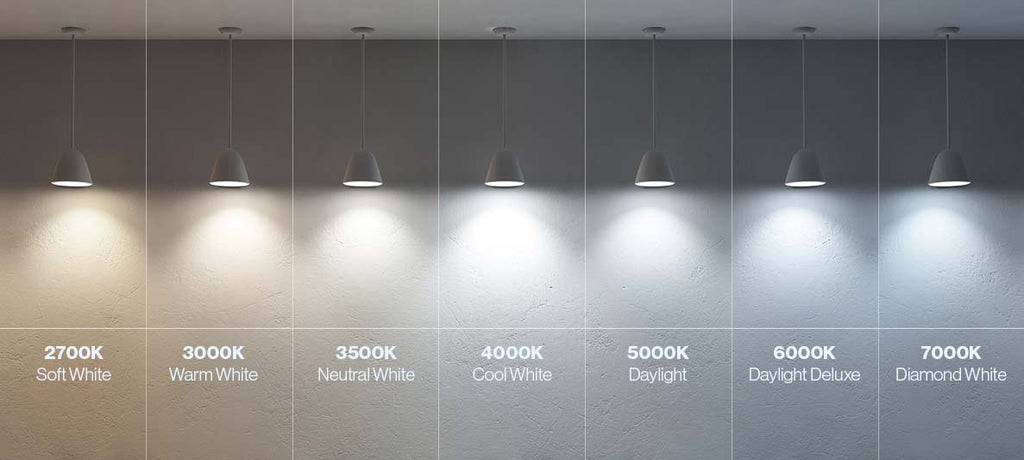What are Different Bulb Shapes Used For?
LED bulbs come in all shapes and sizes—from the standard A-shaped bulb you’d find in a lamp, to tube-shaped bulbs used in garages—and Sunco has them all. But why are there so many different bulb shapes, and what are they even used for?
Each bulb has different capabilities and different applications. Much like you wouldn’t use a fork to eat soup, some bulbs don’t work well as spotlights, and some won’t be a good fit to light up a driveway.
A-Shaped Bulbs

When you think of a light bulb, your brain probably pictures the traditional A-shaped bulb. These are the classic iteration of a bulb that are versatile and suitable for most residential fixtures. It resembles a pear and is typically what you picture when you think of a light bulb. These bulbs have a rounded top and a screw base, which allows them to fit easily into standard light fixtures. They are designed to provide a broad beam of light and are often made from clear or frosted glass, which helps to diffuse the light evenly throughout the space.
They are commonly found in table lamps, ceiling fixtures, and floor lamps. Most people use these bulbs in their homes for general lighting, where they can illuminate a room effectively.
Globe (G-shaped) Bulbs

As is evident by their name, globe bulbs are shaped like...well, a globe. They come in various sizes, typically ranging from 2 to 6 inches in diameter, and they can be frosted or clear. The globe shape allows for an even distribution of light, creating a soft, inviting glow. These bulbs are often used in decorative fixtures where aesthetics are important, as their design is unique. Think bathroom vanities or eclectic wall fixtures.
Candelabra Bulbs

Candelabra bulbs have a slender, elegant shape that resembles the flame of a chandelier or candlestick, making them a favorite for decorative fixtures. They often have a smaller base (E12) compared to standard bulbs (E26), which makes them ideal for fixtures where space is limited.
These are especially popular for use in dining rooms and living areas, where the lighting contributes to the overall atmosphere of a space. They’re generally considered a “fancy” bulb and bring an air of elegance to any fixture.
PAR Bulbs

PAR stands for “Parabolic Aluminized Reflector,” which is just a fancy way of explaining the lens style. PARs produce a narrow beam angle. These provide concentrated light, making them ideal for task lighting and accentuating specific areas. In outdoor settings, PAR bulbs are often used for security lighting or to enhance landscaping features, ensuring that areas are well-lit and safe. Sunco’s PAR bulbs are wet rated so they can withstand the elements while they light up driveways, front porches, or backyards. Their versatility makes them a popular choice for both homes and businesses alike.
BR Bulbs

Traditional BR bulbs feature a bulging reflector inside the housing—hence the name “BR,” which stands for Bulged Reflector. On Sunco BR LEDs, you’ll notice this bulging shape just above the socket base when viewed from the side, as shown in the diagram above. BR bulbs emit a wide beam angle, making them ideal for use as directional flood lights that cover large areas.
They produce a softer, more diffuse light with gentle edges, creating a wide pool of illumination. This makes BR bulbs effective downlights in recessed can fixtures. The soft edge of the light beam produced by BR Bulbs will create a nice wall wash in interior light fixtures.
Tube (T-shaped) bulbs

Tube bulbs, commonly known as T-bulbs, are long and cylindrical in shape. The "T" stands for "tubular," and they come in various lengths and diameters, making them versatile for many applications. The most common types are T8 and T12 bulbs, which differ in diameter and length. Their tubular shape allows for an even distribution of light along the length of the bulb, making them ideal for fixtures that require broad, consistent illumination. The design also allows easy installation in standard fixtures.
T-bulbs are often used in commercial settings, such as offices and schools, where they provide bright, even light for work environments. They are also common in residential applications, like garages and kitchens, where bright lighting is needed. Their ability to illuminate large areas consistently makes them a go-to light bulb for work areas.
What do the Numbers on Bulb Names Mean?
Manufacturers use standard numbers like PAR30 or BR30 to indicate the bulb size. The number indicates the diameter of the lamp portion, not the base of the bulb. The diameter for these two bulb types is measured in eighths of an inch. Example: BR30 = 30/8 inches or approximately 3 ¾”
So, as an example, Sunco PAR Diameters are as follows:
PAR20 = 2.48”
PAR30 = 3.74”
PAR38 = 4.72”
This is considered the general measurement system for bulbs across the board.
Wrapping Up
When choosing the right bulb, consider the purpose of the lighting. whether you need soft, ambient light for relaxation or bright, directed light for tasks. Additionally, think about the fixtures in which the bulbs will be used, as some shapes fit better than others. By understanding the benefits and applications of each bulb shape, you can make informed decisions that improve the lighting in your home or workspace.
1 comment
-
Posted on by Dan McAnallenGood information. Thanks.



